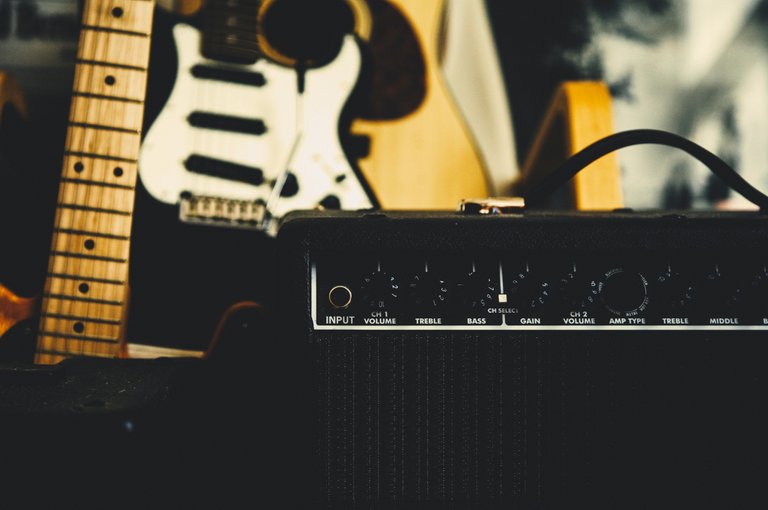
source
First of all, I must state that this post is not for the professional or intermediate guitar player as they have probably already learned or know about these stuff, but it may be beneficial still to the professional or intermediate guitar player who wishes or who may wish to tutor wannabe guitar players someday. I will follow no set order while mentioning and trying to explain this basic stuff but I'll just mention and explain them randomly as I feel would be important to the wannabe guitar player or even the non-musician watching his/her favorite guitar player play.
We've all at a point in time come across something, either occasionally or frequently, that we just can't name or maybe a word that we can't just match an action or object to. For example, it took me years to finally know that the somewhat tiny plastic or metal sheath at the tip of our shoelaces is called “aglet”. This may not be the exact case with you as yours may be a less common object like a guitar capo, the tuning pegs of a guitar or just simply knowing that pressing down the strings to the fingerboard of your guitar with your left hand (if you are a right-handed player) is called “fretting” and your left hand thus referred to as “fretting hand”.
This is not a guitar tutorial post, so don't expect me to give a very detailed description or guide you on how to perform some guitar techniques, this is a general guitar knowledge post rather. And also this post is not solely about gadgets or techniques as I will make mention of one or two terms mostly used in the guitar world. Without taking much of your time, let's jump to business:
Action
In the field of mechanics, an action is simply an operating mechanism or the manner in which this mechanism operates. That is why in firearms you'll hear of a pump or slide action firearm which ejects rounds of ammunition when a forehand is moved forward and backward (pumped). But in music, the term “action” is somewhat different. The action of a plucked musical instrument (guitar, ukulele, mandolin, etc) is simply the distance between the fretboard (fingerboard) and the strings. But in keyboard instruments like the piano and the harpsichord, the action is the mechanism that interpretes or translates the movement of the keys into sound creation. Without making it sound complicated, action on the guitar is how far your strings are from your guitar fretboard. This is somewhat very important to know as a newbie because you will most likely often hear the older players talk about kinds of stuff like nice action, adjusting the action and other stuff about guitar action.
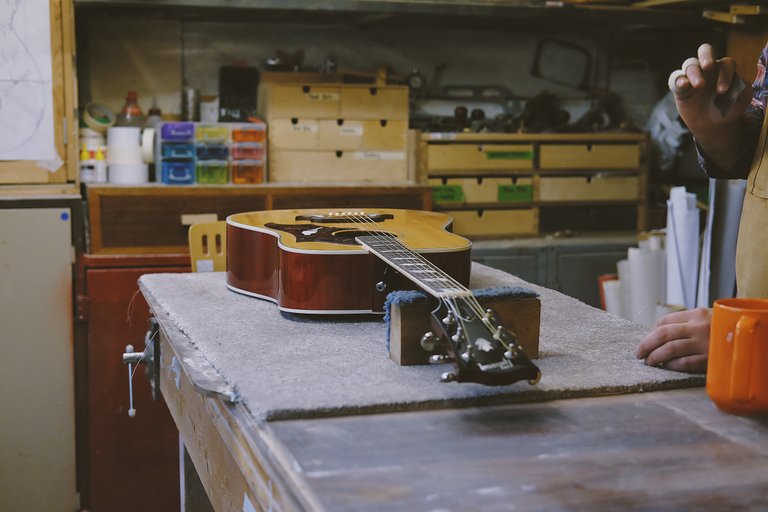
source
Some new guitars or even old guitars are tougher to play when picked up compared to other guitars. The strings are harder to press down (because its distance from the fretboard is too high), requires more finger strength and may result in more severe fingertip calluses for beginners, thus making the whole learning experience frustrating. The quickest fix for this common problem is always to adjust the guitar action for easy playability. You will often hear of high action and low action guitars. Enough said about guitar action.
Guitar tab
Guitar tabs (tablatures), are very common in the guitar world and have somehow assumed the role of the most traditional means of music notation (despite its inability to efficiently notate time and rhythm) among guitar players. You'll often hear questions like “Do you have the tab for the guitar line on that song?”. A tablature is a form of musical notation that concentrates on fingerings rather than musical pitches and rhythm, thus the most efficient means of writing out guitar chord shapes. As I said earlier, this article will not teach you how to read or interpret stuff like this, but briefly explain what this stuffs mean. This bullet point is just to tell you that as an aspiring guitar player, you will have to learn how to read guitar tabs. This won't take you much time, it can be learned in a day or maybe a year, depending on who you are.
Strumming, Fretting, and picking
To explain the first two words, I'll first assume you are a right-handed person (left-handers should just reverse it). Strumming is basically sweeping your thumb or plectrum (pick) up or down across the guitar strings. As a right-handed player, you strum with your right hand while fretting is simply pressing down the strings or a string against the guitar fretboard with your left hand. Guitar picking, on the other hand, is a collection of both finger and hand technique to trigger movement of the guitar strings for the production of musical pitches or notes. You can perform guitar picking with a pick (plectrum), fingernails (natural or artificial) or even with finger fixed plectrums called finger picks especially for finger-based styles of play like Flamenco, Bossa nova, Ragtime, Folk baroque and African fingerstyle of playing. There are various kinds of guitar plectrums, some vary in thickness and length. It is your duty to decide which is most comfortable for you and which best suits your style of play. The plectrum techniques you will most likely hear about are alternate picking, sweep picking, economy picking, gypsy picking and hybrid picking.
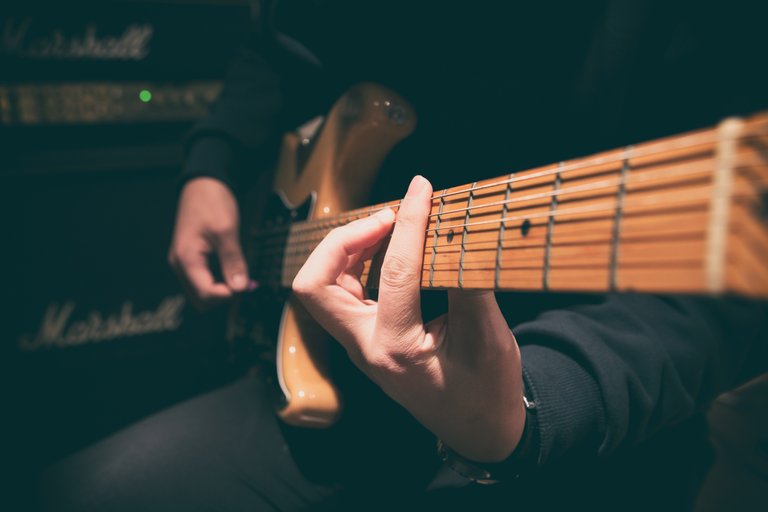
source
Guitar tuner
Because of weather and other factors, the guitar goes very often out of tune (distunes) and it is your duty as a guitar player to tune the strings back to the appropriate pitch. An out-of-tune guitar isn't fun to play or listen to. It can frustrate the whole learning process, so I advise before picking up the guitar, you should probably research about tuners and before even playing your first note or chord on the guitar, you should first learn how to appropriately tune your guitar with a guitar tuner. Tuning is a very important part of playing the guitar as it is not only for newbie players but even the most seasoned and accomplished string bender. The first rule of playing is always to tune your guitar. There are eight categories of guitar tuners and they are: handheld tuners, clip-on tuners (the sexy type your guitar hero clips to the headstock of his guitar), pedal tuners, polyphonic tuners (tunes all six strings of your guitar simultaneously in a single strum), rack tuners (a little bit pricey), sound hole tuners, digital or app tuners (for the smart guys with smartphones) and virtual tuners. You can conduct a deeper research on all eight to find out which best suits you.
Capo(s)
You've probably seen that shiny or colorful piece used to clamp the guitar fretboard and strings together and you might have wondered what it's called and what it does. It is called a capo and it enables you to play open chord shapes (as a beginner you'll play around open chords a lot) all over the neck of your guitar. Normally, open chord shapes on the guitar are only limited to the lower part of the guitar neck but this chord shapes sound so rich and full that all you want to do is play them all over the guitar neck, but the guitar is a very physically challenging instrument and doesn't just give you that privilege, if you wish to play high up the fretboard, you need to learn barre chords and barre chords suck, they are extremely hard to play (don't be discouraged) and your fingers will burn, get weak and maybe give up even before you do. Here is where the cool looking guy (capo) steps in and helps. By just moving the capo up the fret, you can play those rich sounding and simple open chords all over your guitar neck without having to barr nothing. The capo does the barring for you. This sounds cool but just that it won't challenge you to grow and build the needed finger strength as a guitar player. You gotta learn barre chords too, bro. Cool gadget, have it handy but don't depend so much on it. Professional guitarists use it for some other reasons, I won't explain here. You should make a research on these types of capo: trigger capos, screw capos, roller capos, toggle capos, shubb capos, G7th capos and partial capos.
Slides
Though this is generally not recommended for beginners, I still feel it's very important you know the name and the use. You don't want to look all confused and dumbfounded when your non-musician friend shows you a video of a slide guitar player asking you what it's called. Don't worry about details for now, just know the name and watch a couple of guitar slide YouTube videos and it will all make sense to you. It's a cool style and you may want to consider trying it out in the future.
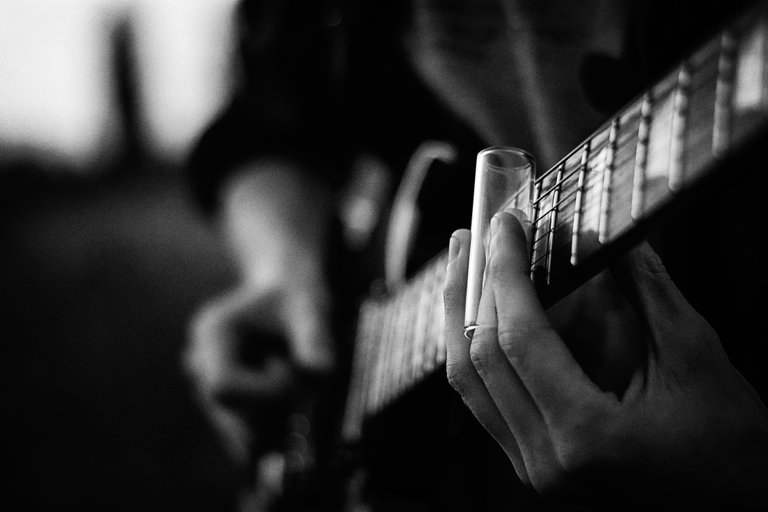
source
Guitar effects pedal
Though not very important to newbie electric guitar players but it is very vital to pro electric string benders and this only makes the chance of you coming across it very high. An effect pedal is basically used to alter the sound of an electric guitar, making it act more like a synthesizer. Effect pedals are like drugs, you may never get enough, you will always want to upgrade and add more. There are tuner pedals, loop pedals, wah pedals, compressor pedals, overdrive (distortion) pedals, EQ pedals, harmonizing pedals, tremolo pedals, chorus, flanger and phaser pedals, volume pedals, echo pedals and noise gate pedals. And after researching on all or some of these pedals, you really need to check out what a pedalboard is.
Guitar amp(s)
Though this concerns the electric guitar players more, it is still very important for the acoustic guitar player also. For the electric guys, without the amp, you can't get a sound from your guitar. What an amp does is that it strengthens the not very strong signal from an electric guitar pickup in order for it to produce sound from one or more loudspeakers.
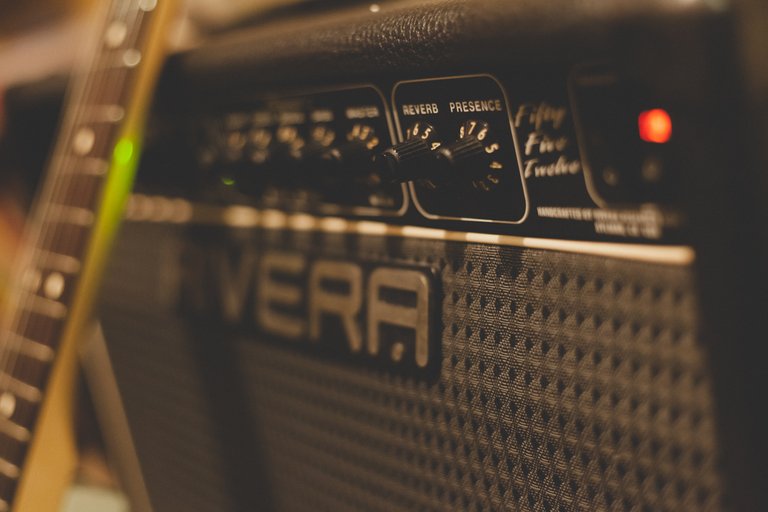
source
There are a couple of other gadgets you should probably research on but I chose to highlight just the ones I feel are extremely important. You should probably check out stuff like guitar straps, guitar picks, acoustic guitar pickups, guitar strings, guitar stands, guitar cables, peg winders and guitar fingering charts.
I really hope this helps someone. Thanks for reading this far.
Good work
Thank you
Congratulations @papaudeme! You have completed some achievement on Steemit and have been rewarded with new badge(s) :
Click on the badge to view your Board of Honor.
If you no longer want to receive notifications, reply to this comment with the word
STOP